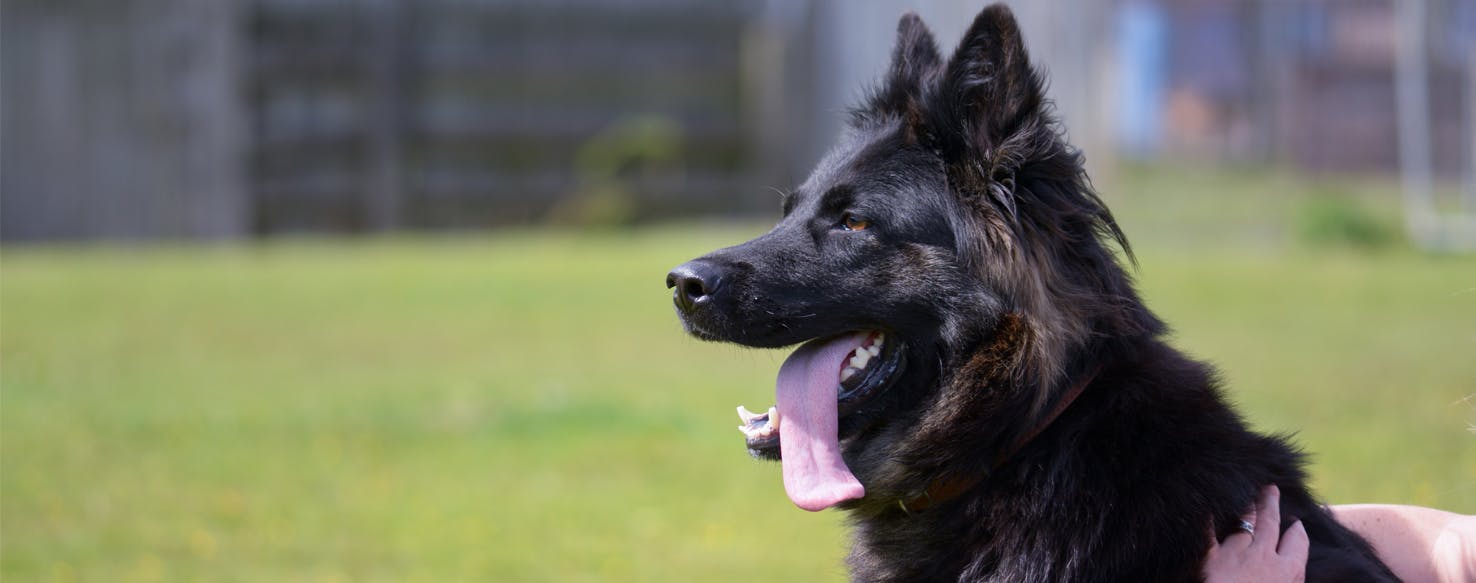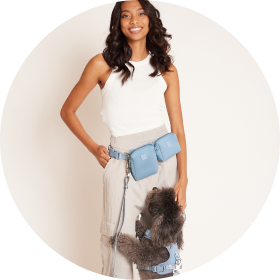- Home
- The Daily Wag!
- Behavior
- Why Dogs Like Being Stroked
Why Dogs Like Being Stroked

Common
Normal
Introduction
Dogs are social animals that very much enjoy being around humans. Often you will find your pet coming to you to be stroked behind the ears, or on the back and belly. They will lean in to you, gently close their eyes and softly pant as you stroke them. At times they may slowly move forward or backwards so that you are petting them in a preferred area such as their chest or just above the tail. They may even fall asleep. Stroking your pet is a great way to build and maintain a loving bond, reinforce desired behavior and support his calm state. Stroking your pet is also a great way to check his coat and note if there are any parasites, snags in fur or changes in his body that could indicate a health problem. While most dogs enjoy being stroked it is important to observe your pet’s reaction to being pet and where he likes to be pet.
The Root of the Behavior
Just as we humans enjoy affection and attention, so do dogs. When we stroke our pet, he feels good. Dogs are pack animals, and touch is one way that they are able to keep tabs of their pack. When we stroke our dog he knows that we are touching base and are with him. Research has shown that dogs spend more time around their owners who pet them than those that praise them. Primates use grooming as part of their social behavior, and by stroking our pet we are doing a similar behavior in that we are communicating love through touch. Interestingly enough, while most studies on human and pet interaction have noted the benefits to humans, there are some studies that suggest that dogs receive the same benefits. These benefits include lowered blood pressure, reduced heart rate, release of the feel good hormones called endorphins and an increase of oxytocin, also known as the bonding hormone. It is important to note that not all dogs like to be stroked, that there are areas where dogs do not like to be stroked, and that certain areas may create more benefits than others. One rule of stroking a pet is do not stroke one who does not wish to be stroked. A good way to ensure he wants your hands on him is to allow him to initiate the interaction. You can invite him in for stroking by getting on his level and extending the back of your hand. Dogs intuitively know you cannot grab them with the back of your hand, so you appear more inviting. It is always best to approach in a sideways position. For a more friendly dog you can pat your thighs and call them, but a more timid dog will need you to remain calm and still, and at times, ignore him. A friendly dog will approach with his tail midway high and wagging back and forth and his ears back. He will undoubtedly sniff you, but even this is not an invitation to pet him. If he licks his lips or shows the whites of his eyes he may be uncomfortable and you should stop stroking him. If he runs away, leave him be. If he stays, you may initiate stroking him in one of the more common areas including the shoulders, base of the neck and chest. Your strokes should be slow with medium to deep pressure and go in the direction of his fur. Keep stroking him as long as he stays calm and seems to be enjoying himself. He may lean into you or move so you can stroke him in his favorite spots. Additional areas some dogs enjoy being stroked are the back of the neck and the base of the tail.
Need advice about your pet's health?
Get answers fast from a veterinary professional 24/7 in the Wag! App.
Get Vet ChatEncouraging the Behavior
Stroking your pet makes both you and your pet feel good but it is important to note there are times when it is beneficial and there are times when it is not appropriate. When you pet your dog you are reinforcing the behavior that has recently occurred. You should pet him when he is producing a desired behavior and is calm and being submissive. It is a good idea to pet him when he is being stable. You can pet him after he has changed a negative behavior, exercised, eaten or has performed a desired behavior. Some studies suggest that your dog responds better to your stroking as behavior reinforcement than verbal praise. Many trainers find you can illicit greater changes with stroking your pet than with using treats. Do not stroke your pet if he has misbehaved, as he will take it as a sign of reinforcement. You should also avoid stroking him when he is barking, whining, being aggressive, breaking a rule or fearful and anxious. If you pet him at these times, while it may intuitively feel like the right decision, you are actually reinforcing those behaviors and it will be harder to break them in the future. When you stroke your pet, make sure he is comfortable. Every few minutes stop to see if he walks away and needs a break. A dog that is restricted or confined may feel defensive and not welcome the physical attention. Dogs do not often enjoy being hugged either as it can feel constrictive. When stroking a dog, pet him on the side you are on to avoid reaching over him. He could also see this as aggressive and be put on the defensive. Most dogs love to have their belly rubbed, but only if they present their belly to you. Do not roll a dog over or force him onto his back for a belly rub if he has not asked you to so. If a dog has rolled over in greeting you, he is being submissive, not inviting you to stroke his belly. Doing so at this time can make him anxious. Always ask an owner if you may pet her dog, especially if the dog is on a leash.
Other Solutions and Considerations
In general, dogs do not like to be patted, especially on the head. Slapping their sides and petting them vigorously can also over-stimulate them and cause them to become defensive or anxious. Studies have shown that dogs pet on the paws and jaw often showed signs of stress. If your dog seems to shake off a petting session, he most likely did not enjoy where or how you were stroking him. Children should be taught how to approach a dog and pet him appropriately as children can often make dogs anxious. They should be encouraged to remain calm, be gentle with their petting and keep it to a minimum. Almost on instinct children are drawn to patting a dog and hugging them, as well as getting close to their face and touching their eyes. All of these behaviors should be discouraged and avoided as the dog will become uncomfortable, anxious and possibly aggressive. The more you pet your dog, the more you bond but also the more familiar you become with his coat and body. You will be more apt to notice if his skin or fur has a problem, or if he has developed a possible medical problem such as tumors or lesions. If a pet that used to love being stroked suddenly does not enjoy your attention, he also may have a medical or behavioral problem that a vet or trainer may need to address.
Conclusion
Your dog likes to be stroked because it feels good, it is a form of bonding and it tells him you are his. Your dog likes to be stroked on his shoulders, chest and back of the neck, and he likes when you use slow firm hands in the direction of his fur. You can stroke your dog to bond and to reinforce desired behaviors. Be careful to not stroke dogs that are unfamiliar to you or dogs that are restrained. Try to not pat the dog on the head, tail or paws and refrain from hugging him or stroking his belly if he presents it while meeting you in a submissive way. If the dog is timid, gives the white side eye or licks his lips he may not want to be pet. Take breaks from stroking your dog to ensure he is still interested. Do not stroke him if he has misbehaved, is barking or anxious. Over all, pet your pet and he will be stoked.
Written by a Shiba Inu lover Patty Oelze
Veterinary reviewed by:
Published: 02/07/2018, edited: 01/30/2020
More articles by Patty Oelze
